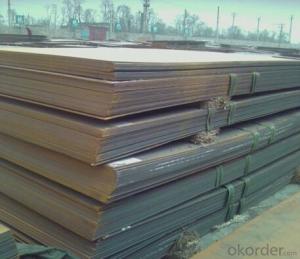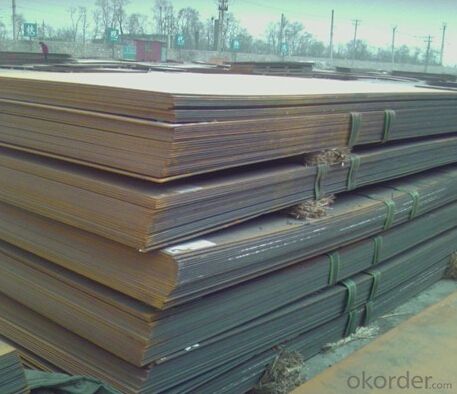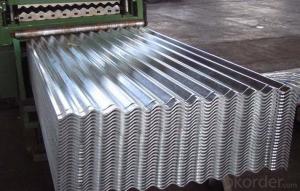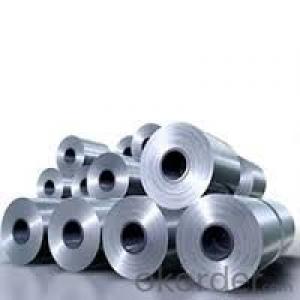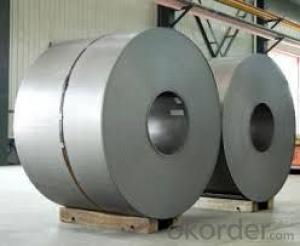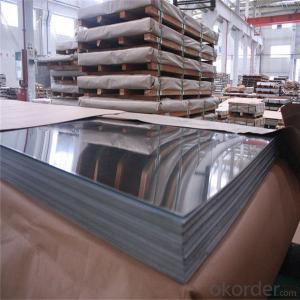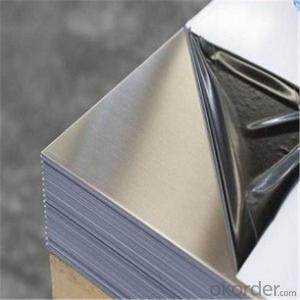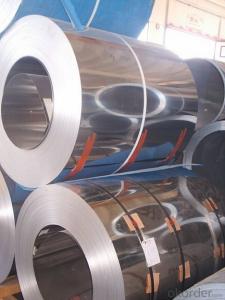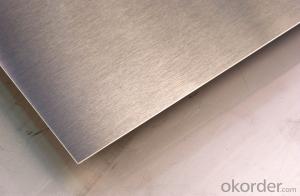Steel Sheet for Boiler and Pressure Vessel AISI/ASTM A36
- Loading Port:
- Tianjin
- Payment Terms:
- TT OR LC
- Min Order Qty:
- 50 m.t.
- Supply Capability:
- 50000 m.t./month
OKorder Service Pledge
OKorder Financial Service
You Might Also Like
Specification
1.Description of steel sheet:
Stainless steel types 304 and 304L.Type 304 stainless steel material is a kind of common stainless steel materials, corrosion prevention is b
2.Features of steel sheet:
304 stainless steel has good corrosion and corrosion resistance and good resistance to intergranular corrosion. For oxidizing acid, obtained in the experiment, the concentration of 65% or less under the boiling temperature of nitric acid, 304stainless steel has a strong corrosion resistance. To most organic and inorganic acid and alkali solution with good corrosion resistance ability.
All stainless stock can be delivered mirror polished if required
3.Data of steel sheet:
Type | Grade | Standard | Specification(mm) |
Carbon and Low Alloy Structure Steel
| Q195/Q215(A,B),Q275(A,B,C,D) | GB/T3274,GB/T700 | 6-130*1500-4100 |
Q345(A,B,C,D,E) | GB/T1591 | 6-140*1500-4100 | |
Q390/Q420 (A,B,C,D,E) | |||
SS330/SS400/SS490/SS540 | JIS G3101 | 6-120*1500-4100 | |
S235(JR,J0,J2)/S275(JR,J0,J2)/S355(JR, J0,J2,K2) | EN10025-2 | 8-50*1500-4100 | |
St37/St52 series | DIN 17100 | ||
A36, A572 GR.42-GR.65 A709 GR.36-GR.50 | ASTM A36/A36M, ASTM A572/A572M ASTM A709/A709M | 8-100*1500-4100 | |
S275/S355(N,NL) | EN 10025-3 |
4.Image of steel sheet:
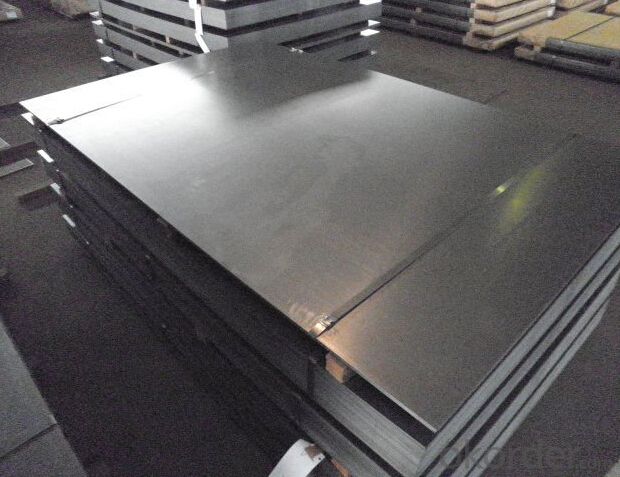
5.FAQ
We have organized several common questions for our clients,may help you sincerely:
①How about your Warranty?
Warranty: 1-Year for the whole light. Warranty is based on correct storage, installation, using and maintenanc
②How to guarantee the quality of the products?
We have established the international advanced quality management system,every link from raw material to final product we have strict quality test;We resolutely put an end to unqualified products flowing into the market. At the same time, we will provide necessary follow-up service assurance.
③How long can we receive the product after purchase?
In the purchase of product within three working days, We will arrange the factory delivery as soon as possible. The pecific time of receiving is related to the state and position of customers.Commonly 7 to 10 working days can be served.
- Q: Can steel sheets be used for transportation equipment?
- Yes, steel sheets can be used for transportation equipment. Steel is commonly used in the automotive industry for manufacturing various components such as body panels, frames, chassis, and other structural parts due to its high strength, durability, and impact resistance. It is also utilized in the production of trains, ships, and aircraft, making it a versatile material for transportation equipment.
- Q: What are the safety considerations when working with steel sheets?
- When working with steel sheets, it is important to keep several safety considerations in mind: 1. Personal Protective Equipment (PPE) is crucial for protecting yourself from potential hazards. This includes safety glasses or goggles, gloves, steel-toed boots, and a hard hat. 2. When lifting and handling steel sheets, use proper techniques such as bending your knees and keeping your back straight. Alternatively, you can utilize mechanical lifting equipment like cranes or forklifts. Avoid attempting to lift sheets that are too heavy for you alone. 3. Be mindful of slips, trips, and falls on slippery surfaces created by steel sheets, especially when they are wet or oily. Keep work areas clean and free of debris, and use non-slip mats or flooring when necessary. Pay attention to trip hazards like cords or tools and exercise caution when moving around the work area. 4. Take care when handling steel sheets with sharp edges and corners to avoid cuts or injuries. Wear gloves to protect your hands and if needed, use edge protectors or file down sharp edges to reduce the risk of harm. 5. Steel sheets can be flammable when exposed to high temperatures or sparks. Ensure that work areas are free of flammable materials and follow proper fire safety procedures. It is important to have fire extinguishers readily available and know how to use them. 6. Working with steel sheets can generate significant noise and vibration. Protect your hearing by wearing earplugs or earmuffs. If using power tools, make sure they are well-maintained and have vibration-dampening features to minimize the risk of hand-arm vibration syndrome. 7. Adequate ventilation is necessary when working with steel sheets that may release fumes or dust when cut or welded. Ensure that the workspace is well-ventilated to prevent the accumulation of harmful gases or particles. If necessary, use exhaust fans or wear respiratory protection to avoid inhaling hazardous substances. By adhering to these safety considerations, you can reduce the risks associated with working with steel sheets and promote a safer work environment for yourself and others.
- Q: Are steel sheets suitable for railway infrastructure?
- Yes, steel sheets are suitable for railway infrastructure. Steel is a widely used material in the construction of railway infrastructure due to its strength, durability, and versatility. One of the main advantages of using steel sheets for railway infrastructure is their high strength-to-weight ratio. Steel is known for its exceptional strength, allowing it to withstand heavy loads and provide long-lasting support to railway tracks, bridges, and other structures. This strength is crucial in ensuring the safety and stability of the railway system, especially when dealing with the immense weight and impact forces exerted by trains. Additionally, steel sheets offer excellent durability and resistance to wear and tear. Railway infrastructure is subjected to constant stress, including vibrations, impacts, and extreme weather conditions. Steel's inherent properties make it highly resilient to these factors, minimizing the need for frequent repairs and maintenance. This durability translates into significant cost savings in the long run, as steel structures have a longer lifespan compared to other materials. Moreover, steel sheets are highly versatile and can be easily fabricated into various shapes and sizes to meet specific railway infrastructure requirements. This flexibility allows for the efficient construction of rails, sleepers, bridges, and other components needed for a functional and safe railway system. Steel's adaptability also enables easy modifications and expansions to the infrastructure as needed, ensuring compatibility with evolving transportation needs. In conclusion, steel sheets are well-suited for railway infrastructure due to their strength, durability, and versatility. Their high strength-to-weight ratio, resistance to wear and tear, and ease of fabrication make them an ideal choice for constructing and maintaining railway tracks, bridges, and other structures. The use of steel in railway infrastructure ensures the safety, efficiency, and longevity of the railway system.
- Q: What is the cost of steel sheets?
- The cost of steel sheets can vary depending on factors such as size, thickness, quality, and market conditions. It is best to check with suppliers or manufacturers for current pricing information.
- Q: Can steel sheets be painted or coated after installation?
- Yes, steel sheets can be painted or coated after installation. Painting or coating steel sheets after installation is a common practice to enhance their aesthetic appeal, protect them from corrosion, or provide specific functionalities such as fire resistance or insulation. The process involves proper surface preparation and choosing suitable paints or coatings that adhere well to the steel surface.
- Q: Can steel sheets be used for automotive fuel tanks?
- No, steel sheets are not typically used for automotive fuel tanks due to their susceptibility to corrosion and weight compared to other materials like aluminum or plastic.
- Q: What are the different jointing methods for steel sheets?
- Steel sheets can be joined using various methods, depending on specific requirements and applications. Common jointing methods for steel sheets include welding, bolting, riveting, adhesive bonding, and mechanical fasteners. Welding is widely used, involving melting the steel sheet edges and joining them by applying heat and pressure. Different welding techniques, like arc welding, gas welding, or laser welding, can be used depending on the steel sheet thickness and type. Bolting involves using bolts and nuts to join steel sheets together. This method is suitable for easily disassembling or replacing joints and can be used for both permanent and temporary connections. Riveting is another method, using rivets to join steel sheets. Rivets are cylindrical metal pins inserted through holes in the sheets and deformed to secure the joint. Riveting is ideal for applications requiring high shear strength. Adhesive bonding uses specialized adhesives to join steel sheets. This method provides a strong and durable joint, suitable when welding or other mechanical jointing methods are not suitable. Adhesive bonding also distributes stress more uniformly across the joint. Mechanical fasteners, like clips, clamps, or brackets, can be used to join steel sheets. These fasteners offer a secure and reliable connection without requiring welding or other permanent jointing methods. They are commonly used when ease of assembly and disassembly is necessary. In conclusion, the choice of jointing method for steel sheets depends on factors such as the application, desired strength and durability, and ease of assembly and disassembly. Careful consideration of these factors is essential to ensure a successful and reliable connection.
- Q: Can the steel sheets be used as a magnetic surface?
- Yes, steel sheets can be used as a magnetic surface.
- Q: What are the fire resistance properties of steel sheets?
- Steel sheets have excellent fire resistance properties. Due to their high melting point and low thermal conductivity, steel sheets can withstand high temperatures for an extended period of time without losing their structural integrity. This makes them a reliable choice for construction materials in fire-prone areas, as they can help contain and prevent the spread of fire.
- Q: What is the typical composition of stainless steel sheets?
- Stainless steel sheets are primarily made up of iron, chromium, and nickel. These three elements are the main components that give stainless steel its unique properties. The amount of each element can vary depending on the specific grade of stainless steel being used, but generally, stainless steel sheets contain around 10-30% chromium and 8-20% nickel. Additionally, small amounts of other elements such as carbon, manganese, and molybdenum may be present to further enhance the strength, corrosion resistance, and other desired characteristics of the stainless steel. The composition of stainless steel sheets is carefully balanced to achieve the desired combination of strength, durability, and resistance to corrosion, making it a popular choice for various applications in industries such as construction, automotive, and manufacturing.
Send your message to us
Steel Sheet for Boiler and Pressure Vessel AISI/ASTM A36
- Loading Port:
- Tianjin
- Payment Terms:
- TT OR LC
- Min Order Qty:
- 50 m.t.
- Supply Capability:
- 50000 m.t./month
OKorder Service Pledge
OKorder Financial Service
Similar products
Hot products
Hot Searches
Related keywords
